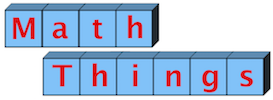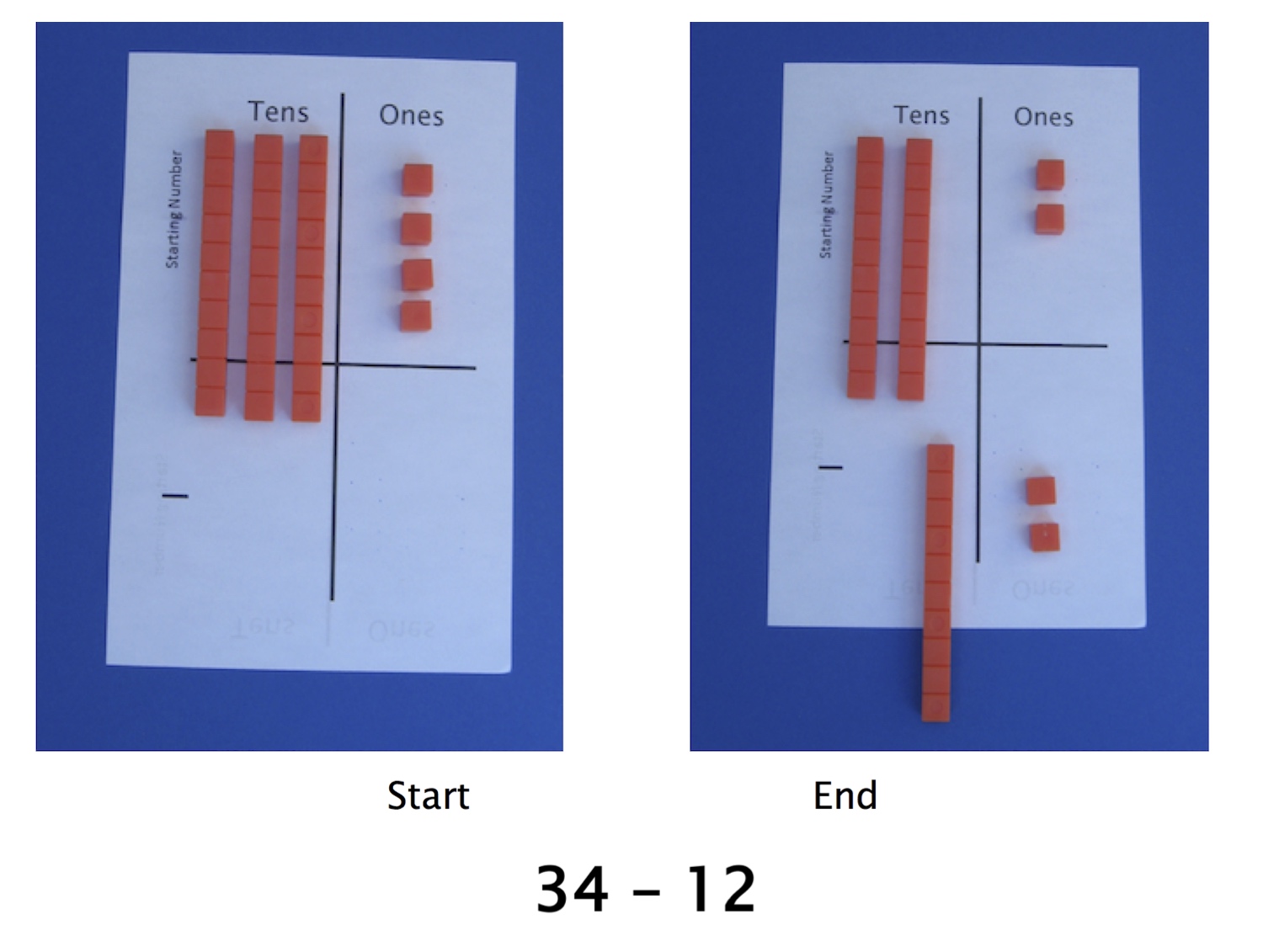Addition and Subtraction with Base Ten Blocks
Here’s a template which helps 1st graders who are having trouble with place value keep their Tens and Ones in order. We want students to know reflexively that Tens are written to the left of the Ones. Of course, kids will always say the Ones are “at the end,” because we read left to right. We want them to instantly know that the “Tens are on the left, Ones are on the right.”
So when we set up an addition problem with 2-digit numbers, students place the first addend’s blocks (the “starting number) in the appropriate column in the top part of the template, and the blocks for the other addend in the lower part. Then they write the problem on whatever paper they’re using. The arrangement of the B10B corresponds to the arrangement of the numbers.
To physically model the addition, students move the blocks from the starting addend at the top to the bottom. Then the total is there to be counted. If students need to physically count the blocks, that’s fine…but we always point out how they can also do the addition on paper.
For subtraction, the minuend blocks are placed above the line. The problem is written, again with the written problem aligned with the template. Then the students move the subtrahend blocks below the line. The blocks that are left up above comprise what is left — the difference – the “answer.” And again students can count the blocks if they need to.
The 2-sided template is a half-sheet. The images are aligned so the page can be cut down the center with addition on one side and subtraction on the other.
The template at left is from a paper-saving Word document on 17 by 11 inch paper, printed 3 to a side. This addition template differs from the one above in that it has a space at the bottom into which students move all the blocks to represent the total or sum. This is only a slight variation on the template above. There is no corresponding subtraction template as the difference is already shown once the students remove the subtrahend.



